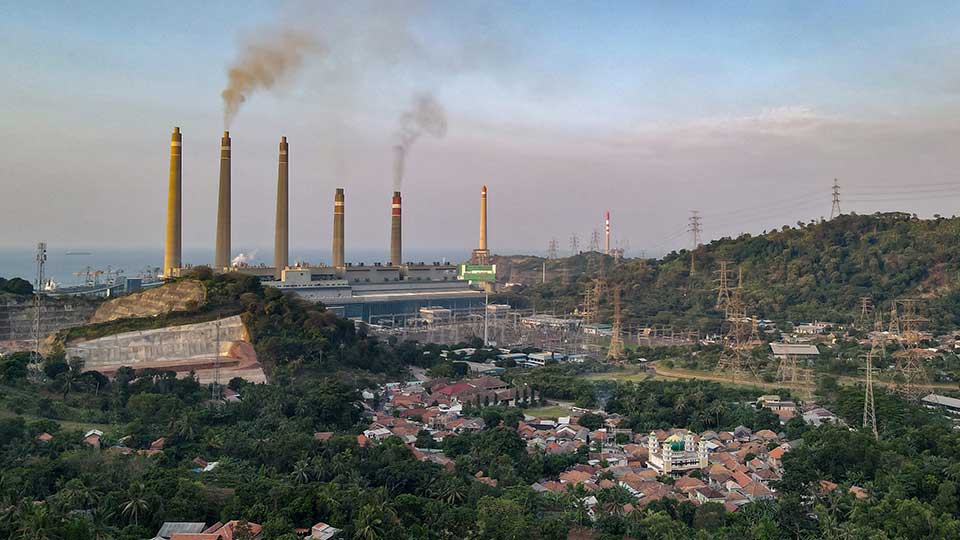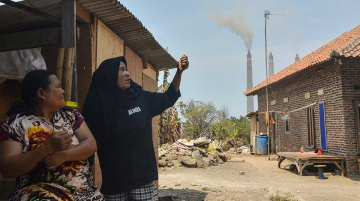
By Alex Clark
Chinese public financial institutions have financed almost 40 gigawatts of coal-fired power generation capacity outside China in the last decade. These coal plants, located predominantly in Indonesia, Vietnam, and Pakistan, as shown below, and with an average age of less than eight years, are under pressure from their host countries’ climate commitments as well as competition from cheaper, cleaner renewable alternatives. If these plants remain in operation for their full 30-year planned lifetimes, meeting net zero coal phaseout targets would be impossible.
What would it take to retire these China-financed coal plants early?
In a new working paper, we examine early retirement options for plants in Indonesia, Vietnam, and Pakistan. We look at the domestic political economy considerations and the role of Chinese creditors in the process.

Routes to Early Retirement
There are several financial routes to early retirement. In a cash buyout, a third party buys the entire plant and then retires it immediately. In a concessional finance approach, the owners of the debt and equity on the plant receive interest rate and return subsidies, respectively, in exchange for retiring the plant early. Either option can take a ‘carbon swap’ form, in which the necessary funds are raised by monetizing avoided future carbon emissions.
We find that concessional finance can achieve the same result at a lower cost than a full buyout. For a representative coal plant five years into its operating life, retiring it 20 years early could be achieved at a cost of about $150 million, 20 percent less than a buyout. This could be fully funded by an implied carbon price of just $12 per ton of CO2, less than half the social cost of carbon estimated for China in 2018. Retiring 15 years early would cost about $50 million using concessional financing, implying a carbon price of $6 per ton of CO2.
Indeed, early retirement can be a highly attractive economic bargain, especially given that subsidizing returns to investors can be a more efficient use of public funds than buying out plants entirely. By using a subsidy mechanism, early retirements can be achieved without diverting more funds than necessary away from investment in desperately needed energy replacement capacity. For China, early retirements can also strengthen the country’s contribution to green global development and expand export markets for renewable technologies to replace retired coal plants at the same time.
Navigating obstacles: The Political Economy of Retiring Coal
Despite the strong economic case for it, early retirement is not yet a reality in Indonesia, Vietnam or Pakistan. In all three countries, power is concentrated within political elites. In turn, these elites are constrained to different extents by (state-owned or private) coal companies and electricity companies. Coal plays a key role in driving growth, energy security and energy affordability and does so with the support of highly distorted electricity markets that protect coal from renewable competition.
But political influence in each country is also closely tied to the ability to raise foreign capital for domestic investment. This means that allowing external actors to finance early retirement does not necessarily threaten established political power structures. For early retirement to stand a chance, it must avoid diverting funds needed for renewable energy expansion – and requires the active engagement of Chinese debt and equity holders, and ultimately the Chinese government.
Several options are available to China, many of which have been routinely used by Chinese institutions to offer debt relief. These include debt restructuring, interest rate reductions and transferring assets to a dedicated bank or asset management company (either within China or internationally along the lines of the Asian Development Bank’s (ADB) Energy Transition Mechanism model).
JETPs with Chinese Characteristics
Chinese public financial institutions are well-placed to lead the early retirement of the very same plants they have funded. While China is unlikely to sign up to the Just Energy Transition Partnership (JETP) model backed by Western economies, it can develop its own version. Debt-for-climate swaps are already under discussion in China for deployment in overseas financing, and the Chinese government has already created over 20 overseas development funds that could serve as institutional homes for coal plant assets targeted for early retirement.
The political economy challenges make early retirement of China-financed plants in South and Southeast Asia a delicate issue – but the economic case for doing so is overwhelming, and viable financial models and political strategies do exist. Time is of the essence in implementing cost- and carbon-saving approaches to mitigate the worst effects of climate change and support energy transitions in developing economies.
Alex Clark is a PhD Researcher at the Smith School of Enterprise and the Environment, University of Oxford and a former Global China Research Fellow at the Boston University Global Development Policy Center (2021-2022). He works primarily on state-owned power companies and socioeconomic pathways for phasing out coal, with a particular focus on China. Follow him on Twitter: @AlexClarkUK.







